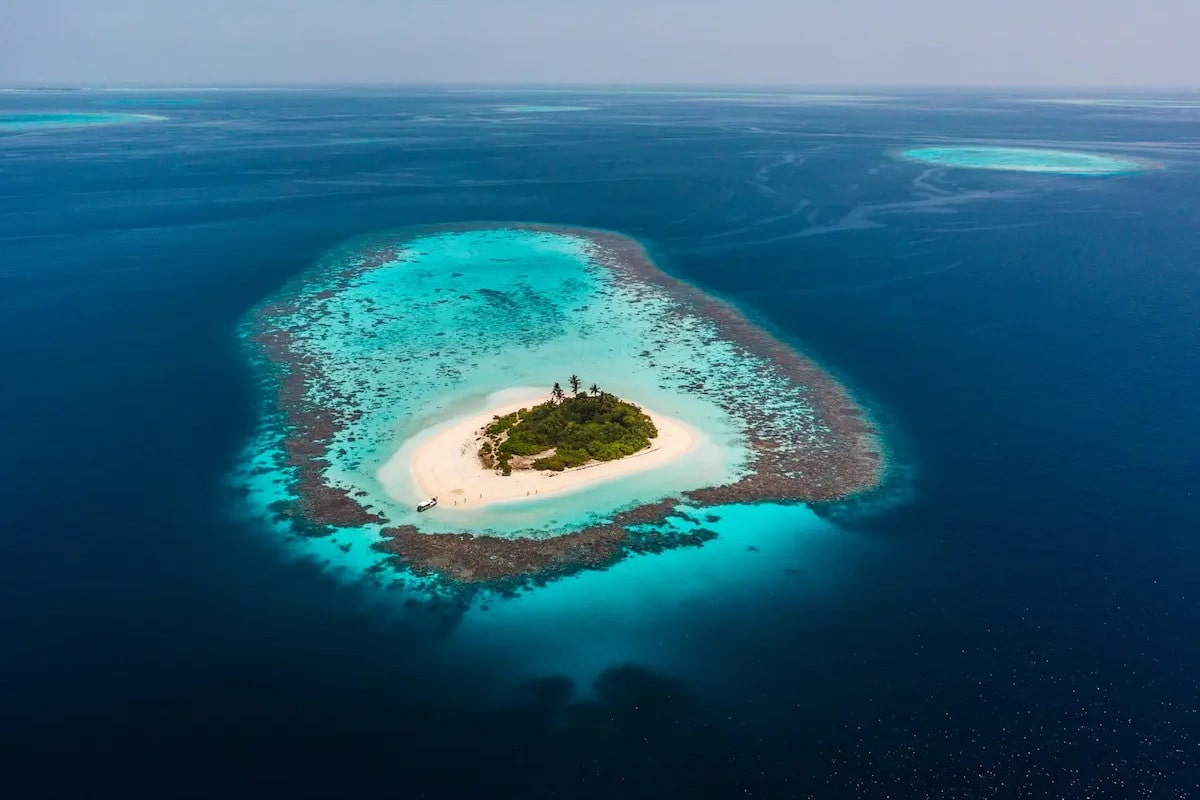Atolls are among the most fascinating geological formations on Earth. Their ring-shaped structure and crystal-clear lagoons attract travelers, biologists, and photographers from around the world. Although they resemble idyllic tropical paradises, their formation is tied to long and complex geological processes. Most people associate them with vacation destinations, but behind their beauty lies a wealth of surprising details. Discover some amazing and interesting facts about atolls you might not know.
- An atoll forms around an extinct volcano that gradually sinks below the ocean surface. Corals begin to grow around the crater, creating a ring with a central lagoon. This process can take thousands of years to complete.
- The largest atoll in the world is Kwajalein, part of the Marshall Islands. It stretches about 80 kilometers and consists of more than 90 small islets. Today, it is home to a major U.S. military installation.
- Atolls are particularly vulnerable to rising sea levels. Most of them rise only 2 to 3 meters above sea level, making them highly susceptible to flooding. This poses a real threat to the local communities living there.
- Atolls lack natural sources of fresh water. Residents usually collect rainwater or use desalination systems to make seawater drinkable. During the rainy season, harvesting water becomes a vital activity.
- Some atolls have been used for nuclear testing. Bikini Atoll, for example, was the site of several U.S. nuclear detonations. The area remains contaminated with radiation and uninhabitable to this day.
- The lagoons within atolls are rich in biodiversity. Many species of fish and corals are found only in these unique marine environments. These waters are of great interest to scientists studying marine life.
- Atolls serve as important nesting grounds for seabirds and sea turtles. The absence of predators allows these animals to breed in safe conditions. Many of these species are endangered and rely on atolls for survival.
- The soil on atolls is poor and made mostly of sand and coral fragments. Growing crops is difficult, so residents often depend on fishing and coconut harvesting. Agriculture is practiced only on a small scale.
- Travel between islets in an atoll is usually possible only by boat. Roads are rare, and water channels are the main means of transport. The lifestyle of the locals is deeply intertwined with the sea.
- Building on an atoll requires special techniques. Unstable ground and erosion risks force the use of lightweight structures, often built on stilts. This helps minimize the environmental impact on fragile ecosystems.
- Atolls are among the youngest landforms on the planet. Their geological age usually does not exceed a few thousand years. In geological terms, this is a very short period.
- The water color in atoll lagoons can vary dramatically. Due to the composition of the seabed, algae, and sunlight reflection, the water can appear blue, green, or even pink. This variation draws in tourists and artists alike.
- Many atoll inhabitants preserve ancient seafaring traditions. They can still navigate by the stars and understand wind patterns, using traditional wooden boats. These skills are passed down through generations.
- Some atolls have been designated as UNESCO World Heritage Sites. Aldabra Atoll in the Seychelles is home to giant tortoises and endemic plant species. It is one of the most protected natural areas in the world.
- Despite their remoteness, many atolls now have internet access and mobile connectivity. Satellite technology has enabled remote services and supported tourism development. For many locals, tourism is a primary source of income.
- Entire countries can be made up entirely of atolls. The Maldives is a prime example, consisting of over 1,000 coral islands. Despite its small size, the country has a thriving economy based on tourism and fishing.
- Atolls are highly susceptible to cyclones and tsunamis. Strong storms can erode their structure or submerge entire islets. Their delicate nature makes them extremely vulnerable to climate change.
- The theory of atoll formation was first proposed by Charles Darwin. He suggested that coral reefs grow around sinking volcanic islands. Later scientific research confirmed the validity of his hypothesis.
These incredible facts about atolls reveal their uniqueness and environmental importance. They are living evidence of the complex natural forces that shape our planet. Preserving these ecosystems is a challenge that concerns humanity as a whole. Understanding their nature is a vital step toward a more sustainable future.





